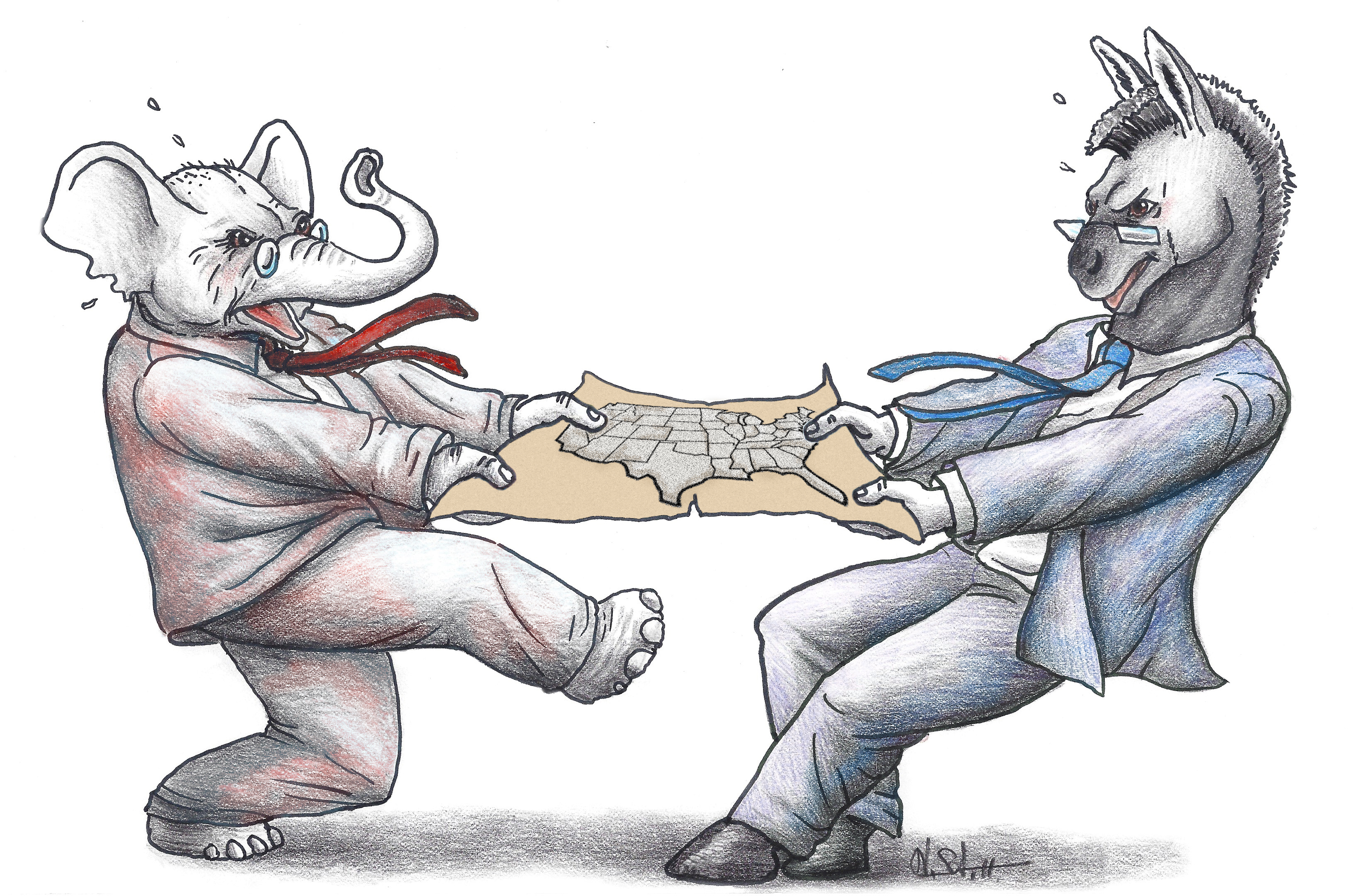Battleground States –
A Tug-of-War for Hearts, Minds, Votes
for the 2024 Presidential and Senatorial elections

Overview and Process
Your students will have two distinct roles:
A) They’ll live and vote in one of the six Presidential Battleground States (BGS) and six Senatorial Battlegrounds
B) They’ll do a limited number of standard election activities
a) Create a campaign theme/slogan
b) Give speeches and answer questions at the Debate (President) Audience Forum (Senate)
c) Do phone-banking
d) Take polls
e) Use social media tools
f) Create TV ads
g) Do Get Out the Vote (GOTV) activities
On Election Day, your students vote in their assigned states. Then, using the forms and the Excel spreadsheet provided, you will be able to calculate the Electoral College (EC) and Popular votes.
I hope you and your class enjoy the simulation. In researching recent elections, I discovered that a handful of states—commonly known as battleground or purple states—had essentially determined who became president and who controlled the Senate. So I created a simulation to explore both these races in a classroom. Because 2024 is a presidential election year (since it’s divisible by 4), but to keep the focus on the voting, you’ll be doing a single set of campaign activities for both races (the Democrats will have a presidential and a senatorial candidate and the Republicans will have the same). Then everyone will vote, but separately for each race.
Presidential Battlegrounds
In the first four of these elections (2000–2012), most states were either solidly Democratic (blue) or solidly Republican (red). In other words, most states voted for the same party in all four elections. North Carolina and Indiana went Republican three out of four times, and New Mexico, Iowa and New Hampshire did the same for the Democrats. But there were five states—Colorado, Florida, Nevada, Ohio and Virginia—where each party won twice during that time period. Those five battleground states were the focus of the 2016 version of this simulation. But a major shift occurred in the actual 2016 election: Three reliably blue states—Michigan, Pennsylvania and Wisconsin—turned red, allowing Donald Trump to win the election.
In the 2020 election, Pennsylvania, Michigan and Wisconsin turned blue again. But there were also two surprise states that turned blue that year: Georgia (reliably red for years, except for Jimmy Carter in 1976, and Bill Clinton in 1992) and Arizona (red since 1952).
With these factors in mind, for the 2024 version of this simulation, I chose the following as the
2024 Battleground States (BGS): Arizona, Georgia, Michigan, Nevada, Pennsylvania and Wisconsin.
Senate Battlegrounds
In the 2020 election, the Democrats elected senators in two battleground states—AZ and GA— giving them the majority for the first time since the 2014 election (114th Congress). In 2022, they held on to all those seats. In addition, John Fetterman captured a previous R seat to give the Ds a 51 to 49 majority. This 2024 election simulation begins with the current makeup of the Senate as a result of the 2020 and 2022 elections. But it focuses on Arizona, Montana, Nevada, Ohio, Pennsylvania, and Wisconsin (the six states that I think will be the Senate Battlegrounds)5 because in every one of those states, a Democratic senator is up for re-election and they are all either battleground or in two cases (MT and OH) are considered red.
